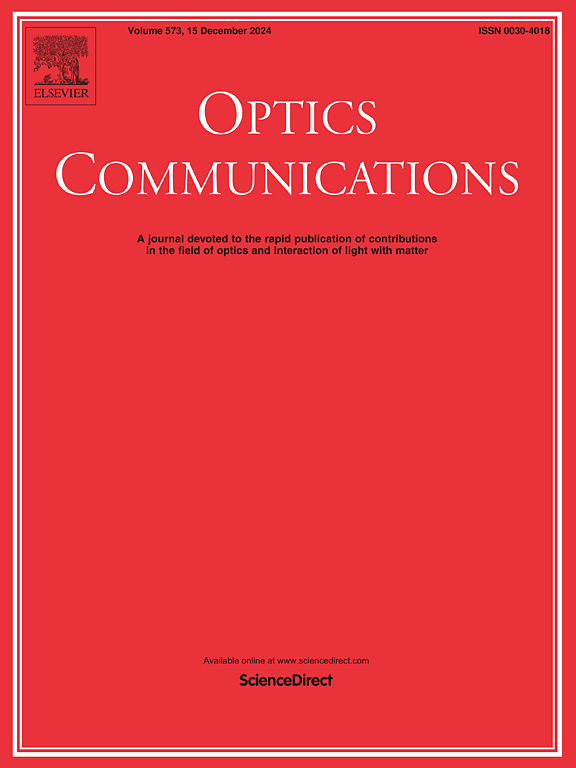Efficient third harmonic generation based on the spatial distribution characteristics of the second harmonic generation efficiency
IF 2.2
3区 物理与天体物理
Q2 OPTICS
引用次数: 0
Abstract
Picosecond ultraviolet lasers are extensively utilized in precision manufacturing and material processing, where system designs prioritize longevity and stability. However, the emphasis on durability and simplicity—exemplified by extra-cavity configurations with LBO crystals—often compromises the overall conversion efficiency, underscoring the need for further optimization. We developed a simulation model based on the spatial distribution characteristics of second harmonic generation (SHG) efficiency to guide the design of an efficient third harmonic generation (THG) system. We developed a simulation model that reveals the functional relationship between the fundamental peak power and the optimal beam diameter. Based on the simulation results, we optimized the design of a highly efficient third harmonic generation system. Consequently, we achieved a conversion efficiency of for wavelength conversion from to . The design integrated disk regenerative amplification and single-crystal fiber technologies for the first time, delivering an ultraviolet output with an average power of . This method advances the third harmonic generation efficiency and offers new pathways for compact, high-performance picosecond ultraviolet laser development in scientific and industrial domains.
基于空间分布特征的高效三次谐波发电效率
皮秒紫外激光器广泛应用于精密制造和材料加工,其中系统设计优先考虑寿命和稳定性。然而,对耐用性和简单性的强调(例如LBO晶体的外腔配置)往往会损害整体转换效率,因此需要进一步优化。基于二次谐波发电(SHG)效率的空间分布特征建立了仿真模型,以指导高效三次谐波发电(THG)系统的设计。我们建立了一个仿真模型,揭示了基波峰值功率与最佳波束直径之间的函数关系。基于仿真结果,优化设计了一种高效的三次谐波产生系统。因此,我们实现了从1030nm到343nm的波长转换效率为17.89%。该设计首次集成了圆盘再生放大和单晶光纤技术,提供平均功率为30.2W的紫外线输出。该方法提高了三次谐波的产生效率,为科学和工业领域的小型化、高性能皮秒紫外激光器的开发提供了新的途径。
本文章由计算机程序翻译,如有差异,请以英文原文为准。
求助全文
约1分钟内获得全文
求助全文
来源期刊

Optics Communications
物理-光学
CiteScore
5.10
自引率
8.30%
发文量
681
审稿时长
38 days
期刊介绍:
Optics Communications invites original and timely contributions containing new results in various fields of optics and photonics. The journal considers theoretical and experimental research in areas ranging from the fundamental properties of light to technological applications. Topics covered include classical and quantum optics, optical physics and light-matter interactions, lasers, imaging, guided-wave optics and optical information processing. Manuscripts should offer clear evidence of novelty and significance. Papers concentrating on mathematical and computational issues, with limited connection to optics, are not suitable for publication in the Journal. Similarly, small technical advances, or papers concerned only with engineering applications or issues of materials science fall outside the journal scope.
 求助内容:
求助内容: 应助结果提醒方式:
应助结果提醒方式:


